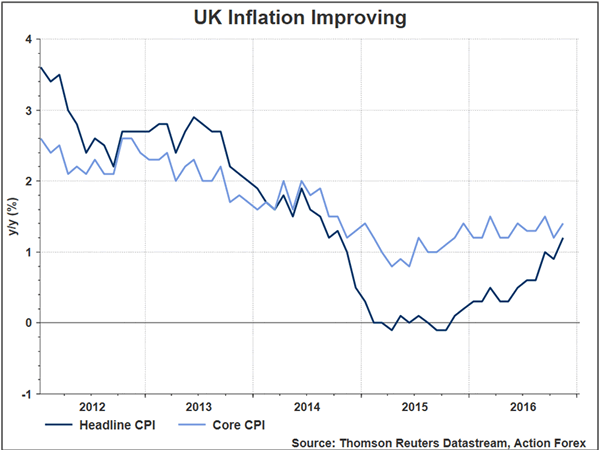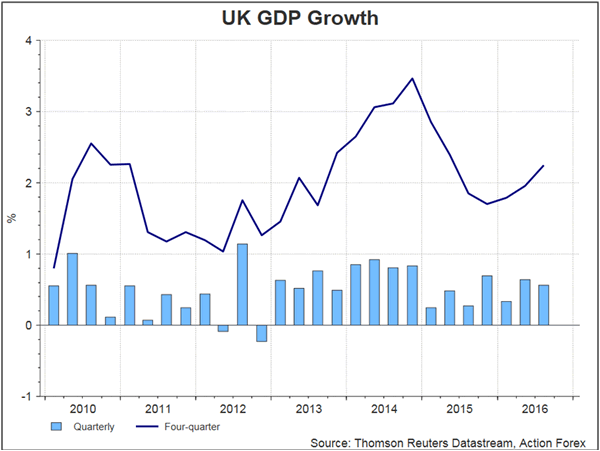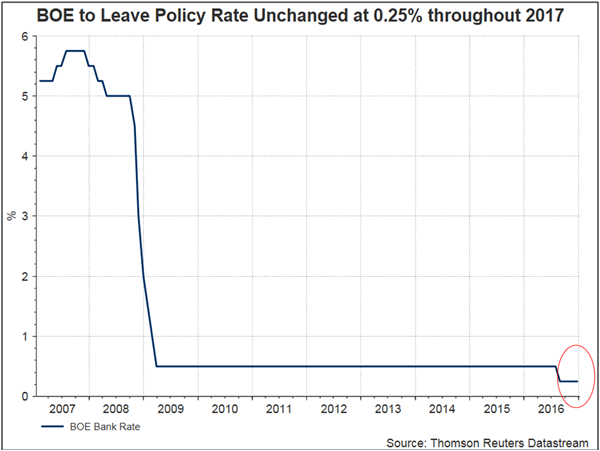British pound was the most volatile G10 currency last year with the trade weighted index plunging -15% on annual basis, despite a -5% rebound from the October low. Sterling fell about -16% against both US dollar and the euro for the year. The huge volatility was mainly driven by political reasons: Brexit referendum, resignation of David Cameron, as succession of Theresa May, as Prime Minster, as well as May’s announcement to trigger Article 30, followed High Court’s ruling that MPs must be consulted before triggering Brexit. In 2017, political risks should continue to haunt UK’s economic developments as Brexit negotiations are prone to begin. The market has recently priced in higher BOE rate expectations due to rising inflation outlook and solid dataflow. Yet, we do not believe any rate hike would be adopted. The central bank would stand on the sideline, maintaining the bank rate at 0.25%, throughout the year. We are bearish over sterling, forecasting it to depreciate against USD and be range-bounded around current levels against the euro, which has been pressured by elevated political risks


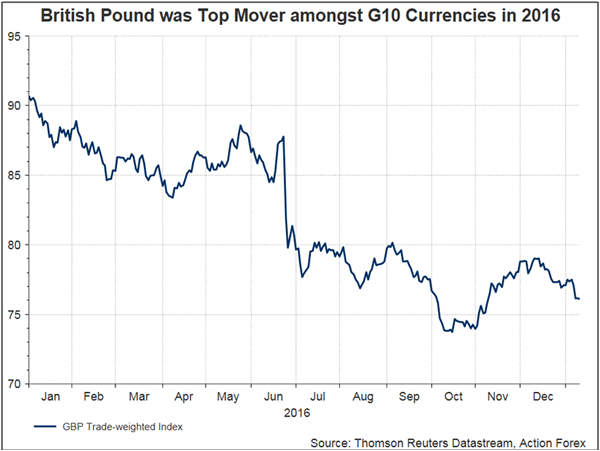
Reemergence of Brexit Risk: PM Theresa May announced last October that she would trigger Article 50, the clause needed to start the Brexit negotiation process, by the end of 1Q17. However, the High Court in November ruled that MPs must be consulted before triggering Brexit. The Supreme Court is set to rule, in early January, on the government appeal against High Court’s judgment. The market continues to expect the triggering would happen in 1Q17. A delay in the process would only prolong uncertainty and weigh on investment, though some judge that the increase in the parliament’s oversight might be supportive to the pound.
For now, the market appears to have underestimated the possibility of, and the severity of the economic impacts to be brought about by, a ‘hard’ Brexit, a scenario that the UK is no longer allowed to freely access to the EU single market for goods and services. In this case, UK and EU would likely enter into a basic free trade agreement, with terms based on the two entities’ existing WTO commitments and limited to minimum tariff reduction and goods trade. The advantage of such a clear breakup with the EU is that the UK would not only regain control over its own budget and legal system, but also sovereignty, in the sense that the Kingdom could control its immigration. There are a few forms of ‘soft’ Brexit. One most-discussed form is UK’s joining of the European Economic Area (EEA), alongside Norway, Liechtenstein and Iceland. In this case, the Kingdom would have to continue to contribute to the EU budget. It would also give up parts of its sovereignty, allowing freedom of movement and following EU rules, to some extents. YouGov’s polling in October suggested that 47% of Britons supported a ‘hard’ Brexit, while 39% supported a ‘soft’ one. This was compared to Opinium’s recent polling that 35% favored a ‘hard’ Brexit and 41% on ‘soft’.
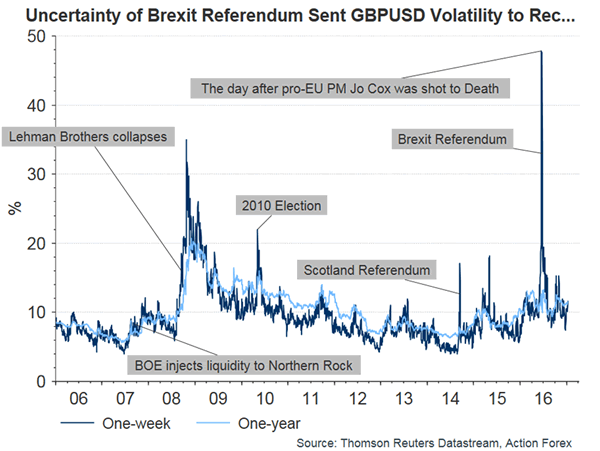
Brexit-inspired Current Account Deficits:
We believe both the UK and the EU would take a tough stance on the negotiation process, increasing the possibility of a ‘hard’ Brexit. A ‘hard’ Brexit without fiscal stimulus, would hurt household finances and further deteriorate UK’s current account balance, both are detrimental to sterling’s movement. The Kingdom’s current account balance has deteriorated significantly in recent years, even before the referendum, driven by widening of deficit in the balance of goods and net income. Uncertainty of how Brexit would materialize has already restrained foreign investments over the past months. With the market readjusting its expectations on higher possibility of a ‘hard’ Brexit would undoubtedly shrink capital inflow and delay inward foreign direct and portfolio investments.

BOE’s Stance:
UK’s GDP growth was revised higher to +0.6% q/q in 3Q16, from the initial estimate of +0.5%, as expansions in all of the services, industrial and construction sectors got revised upwards. The revision has indicative meaning as it signals the economy had grown faster than expected after the Brexit referendum. Meanwhile, headline CPI soared to +1.2% y/y in November, compared with consensus of +1.1%, and October’s +0.9%. This marked the highest level since October 2014. Core CPI (excluding energy and food) accelerated to +1.4% from +1.2% in October. This also came better than expectations of +1.3%. Retail prices, RPI, improved to +2.2% in November, beating expectations of +2.1% and October’s +2%. YouGov’s polls for Citi unveiled that inflation expectations soared, with the long-term forecast rising to a 2-month high of +3%. Short-term inflation expectations stayed largely stable at +2.4%, still lower than BOE’s forecast of +2.7% by end-2017. In his testimony before the Treasury Select Committee, Governor Mark Carney indicated that ‘recent data would be consistent with a further upgrade of the forecasts’ of economic activities.
Rising inflation expectations have lifted speculations over BOE’s rate hike with the market now pricing in a 30% chance this year. At the November meeting, Governor Mark Carney suggested the central bank has "a neutral bias around policy going forward" as the "monetary policy can respond in either direction". While further easing has become less likely, we do not expect a rate hike to come this year as Brexit has inevitably presented downside risks to growth. We expect BOE to maintain the status quo throughout the year.
